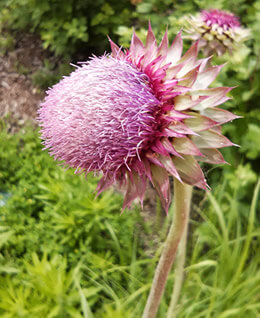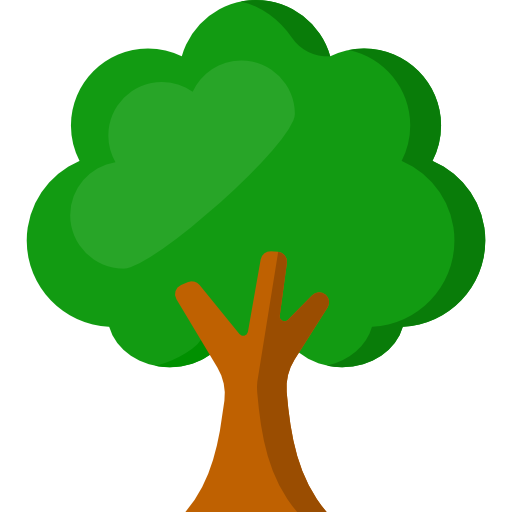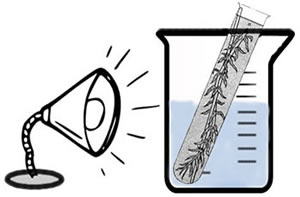
Botany is the study of plants. Students in general biology class are usually required to learn the basic form and function of plants. The coloring pages are a great resource to teach plant anatomy.
Basic Coloring and Reading Worksheets
Flower Coloring – color the parts of a flower; stamen, pistil, ovary, petals
Leaf Coloring – color structures; xylem, phloem, bundle sheath, epidermis, and more.
How Do Chloroplasts Capture Energy – coloring and reading worksheet focus on equation for photosynthesis and production of ATP
Reinforcement: Photosynthesis – practice vocabulary with a list of terms and definitions
Chemiosmosis and ATP Synthesis in Chloroplasts – advanced coloring activity detailing the events of photophosphorylation
Photosynthesis and the Scientific Method – Graphic summarizes a historic experiment where a candle was placed in a jar with a plant and a mouse.
How Does Photosynthesis Work – simple graphic for labeling, showing overall plant and a detailed image of the chloroplast with light reactions
Photosynthesis and Respiration Model – detailed view of the two processes with questions related to the graphic
Alternation of Generations – graphic showing the life cycle of plants, with labeling and questions
Comparing Monocots and Dicots Comparison – color the leaves, stems, and germination pattern for the two types of plants
Photosystem Coloring – shows PSI and PSII, and the ETC, color the structures
Botany Wordsearch – plant terms with wordsearch
Tree Identification – leaf terminology (alternate vs simple), and a key to identify trees of the Midwest
Tree Growth Study – Use images of cross sections of trees to determine the age of the tree
Help Wanted – descriptions of plant jobs (classifieds), students guess the structure best suited
Calvin Cycle – TED-ED video – worksheet that goes with a short video that explains the light independent reaction
Photosynthesis Reading Guide – worksheet to complete when reading CK12 text on photosynthesis
 Labs and Investigations
Labs and Investigations
Rate of Photosynthesis – using baking soda, elodea and light, measure the bubbles to observe how fast a plant photosynthesizes and releases oxygen
What Factors Affect Seed Germination – grow seedlings with different conditions (light, water, temperature)
Algae Beads and Photosynthesis – use algae cultures and sodium alginate, measure photosynthesis by changes in color of indicator
Photosynthesis with Leaf Disks – this lab uses leaf disks that float to indicate photosynthesis. Students investigate factors that affect photosynthesis. (AP Lab)
Photosynthesis and Plant Growth (virtual) – use a virtual app to show how plant growth changes in response to light color and light intensity
Leaf Transpiration – use leaves from trees to analyze how much water is lost when they are exposed to light
Do Plants Consume or Release CO2? – Use phenol red with water plants to observe changes in color when CO2 levels change
Chromatography: Separation of Plant Pigments – use chromatography to show how leaves contain pigments that separate
Where Do Plants Get Their Food? – student designed experiment to disprove the hypothesis that plants get their food from soil
How Do Hormones Affect Plant Growth – use gibberellic acid to show how plants respond to growth hormones
How Much Water is In a Plant? – Weigh grapes or plant clippings to determine how much water plants contain
Rate of Photosynthesis – using baking soda, elodea and light, measure the bubbles to observe how fast a plant photosynthesizes and releases oxygen

Investigation: Photosynthesis – this lab uses leaf disks that float to indicate photosynthesis. Students investigate factors that affect photosynthesis. (AP Lab)
Separation of Plant Pigments – identify plant pigments by separation and isolation of the pigments using thin layer paper chromatography.
Photosystems Labeling – image showing photosystem I and II and the electron transport chain, students label the parts of the system
Fluorescence of Chlorophyll – cut up a spinach leaf and add ethanol to see how chlorophyll turn red under a black light
Investigation of Leaf Stomata – compare stomata of plants kept in the light and dark
Do Plants Consume or Release CO2 – using phenol red as an indicator, colors in test tube will change as the plant releases oxygen and consumes carbon dioxide.
Genetics and Fast Plants – long term investigation where students grow Fast Plants and determine the results of genetic crosses

